by Jasmin Ramsey
It’s not unusual for evidence supposedly indicating an Iranian nuclear weapons program to be leaked to the press, but how credible is that evidence and how should the press be handling it? For example, late last year, the Associated Press reported on a graph, allegedly from Iran, that they said was indicative of Iranian nuclear weapons work. It was quickly revealed, however, that there were multiple errors in the graph, casting doubt on its credibility, authenticity and provenance. In that case, the Associated Press admitted the error promptly. More recently, a Washington Post headline declared, “Iran’s Bid to Buy Banned Magnets Stokes Fears about Major Expansion of Nuclear Capacity.” But according to nuclear physicist Yousaf Butt, the evidence for that claim may be thin at best.
During this interview with Butt, currently a research professor and scientist-in-residence at the Monterey Institute of International Studies, we discussed these issues and the Iranian nuclear standoff more generally.
Q:What do you make of recent claims that Iran may have ordered magnets for its centrifuge program?
Yousaf Butt: The first thing to note is that there is no evidence of any actual magnets. The Washington Post story mentions “purchase orders” for some ceramic ring magnets but there are no “purchase orders”. The whole story is based upon a web-inquiry someone in Iran allegedly made for 100,000 ceramic ring magnets. So this is a simple mischaracterization. The evidence presented (Figures 3 and 4 in the source report) merely show a web inquiry, but we don’t know whether the supplier had any interest in discussing the question further. Such a web-inquiry is one step above a google-search. There is no mention of money, delivery dates or letters of credit, all of which would be part of a formal “purchase order”.
The other problem is in jumping to the conclusion that such magnets can only be used for centrifuges. This is a fault both in the source document as well as the news story. Such magnets have a host of other applications, for instance, in loudspeakers, DC motors, in the blower fan units of car radiators, military field telephones, etc. The article characterizes these magnets as “highly specialized” — they are not. They are common magnets. As I mention in my piece in The Bulletin of the Atomic Scientists, “Although magnets with an energy product of 3 MGO could be consistent with applications in suspension bearings of the older IR-1 centrifuges, they are also consistent with a host of other applications.”
The story is not necessarily completely wrong — it is simply based on very thin evidence (which it exaggerates) and it’s unbalanced because it does not mention the various possible uses of these very common magnets.
Q: If these magnets are so common why would Iran need to import them?
Yousaf Butt: Again, there is no evidence that Iran was importing or even trying to import such magnets — there is merely an alleged web-inquiry, possibly to check prices. In fact, Iran can and does make such magnets within the country. For example, the Taban Magnetic Materials Development Co. has a website where they advertise the fact that they “produce ceramic permanent magnet (hard ferrite)”.
Q: Let’s assume for a moment that this story is correct and Iran does intend to add 50,000 centrifuges — is that a violation of the Nuclear Non-Proliferation Treaty (NPT), to which Iran is a signatory?
Yousaf Butt: No, not at all. So long as enrichment is done under International Atomic Energy Agency (IAEA) safeguards, it is legal, regardless of the number or type of centrifuges. Enrichment does not equate to a bomb factory. The Russian foreign minister Sergey Lavrov has been quite explicit about this and Russia is one of the major P5+1 nations negotiating with Iran. Lavrov has made clear the distinction between what is legally required of Iran and what is being politically requested: “We were told by the IAEA that they (the Iranians) will install next generation centrifuges. However, (Iran) is doing everything in line with their commitments under the Safeguards Agreement. The IAEA has been notified, and the IAEA will be there and will supervise this, but I’d like to repeat that this is a legal aspect of the matter, while the political aspect is that we, along with the other Security Council members, have called on Iran to freeze enrichment operations during the negotiations.”
Q: What about the fear — expressed most strongly by Israel — that Iran may quickly accumulate the material needed for a bomb?
Yousaf Butt: Just last week, the US Director of National Intelligence came out with a brand new Worldwide Threat Assessment, which says quite explicitly: “we assess Iran could not divert safeguarded material and produce a weapon-worth of WGU [weapons grade uranium] before this activity is discovered.” As for Mr. Netanyahu’s red line on Iran: his track-record on predicting Iranian weaponization has been notoriously bad. As I point out in a recent piece for Reuters, in 1992 Mr. Netanyahu said Iran was three to five years from a bomb.
Q: But doesn’t Iran have a history of being less than forthright on nuclear issues?
Yousaf Butt: That’s a very subjective question, but there are often “feelings” and “concerns” voiced informally that Iran has been sneaky in the past, hence it cannot be trusted. Indeed, this may have been the case in the past, but one has to dig deeper into history to find out why. Among the very first things Iran did after the revolution in 1979 was stop its nuclear program because of opposition to nuclear power by its new leader, Ayatollah Ruhollah Khomeini. (Ironically, Iran’s nuclear program was kicked off in the 1950s with the full encouragement and support of the United States, under the auspices of Eisenhower’s Atoms for Peace program.) In 1982, Iran decided to resume work on the Bushehr reactors, partly because it was financially complex to just drop the project.
In 1983, Iran went to the IAEA in an overt, non-sneaky way, to solicit help in setting-up a research-level facility for uranium enrichment. The IAEA agreed and was very receptive to the idea, since helping member nations with such work is part of its duties. However, when US government officials caught wind of this, they intervened politically to stop the IAEA from helping Iran. This was documented by Mark Hibbs in an article for “Nuclear Fuel” which is excerpted here.: “…the U.S. government then ”directly intervened” to discourage the IAEA from assisting Iran in production of UO2 and UF6. ”We stopped that in its tracks,” said a former U.S. official.”
One can debate whether or not that was a smart move on the part of the US, but what is beyond question is that it constitutes politicization of the IAEA. So, indeed, Iran may have done some sneaky things in the past, but their hand has also, to some extent, been forced.
The IAEA is a technical agency and, in my view, it should steer clear of all politics. And this is not just my view, many people in the technical and legal arms control community feel this way. For example, Robert Kelley, who twice served with the IAEA as a director of the nuclear inspections in Iraq has said that “IAEA work to date, including the mischaracterization of satellite images of Parchin, is more consistent with an IAEA agenda to target Iran than of technical analysis.”
Unfortunately, a possible consequence of business as usual at the IAEA is the loss of faith in, and the subsequent collapse of, the non-proliferation regime. One way to start afresh would be to think about an “NPT 2.0” which would demand more of both Nuclear Weapon States as well as of non-Nuclear Weapons States, as I outlined in an article for Foreign Policy.
Photo: Iran’s Arak IR-40 Heavy Water Reactor. Credit: Nanking2012

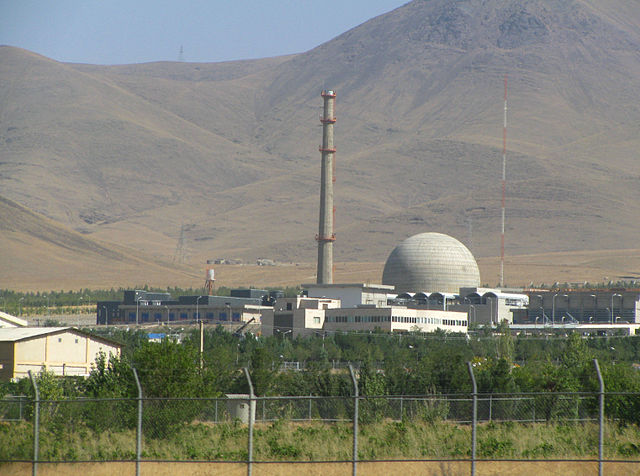
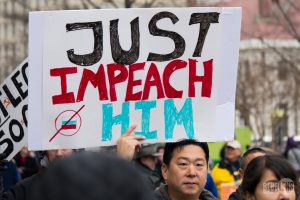
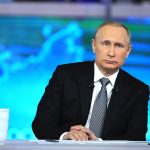
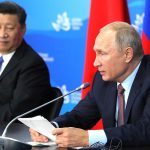
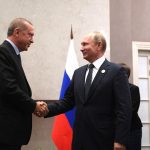
I can’t believe we are still discussing that magnet story! EVERYONE knows there are many applications for such magnets…WaPo and NYTimes misled us into Iraq and are doing the same with Iran now…. with help from groups like ISIS and Congress…. For all the apologies in the media for Iraq why can’t any of them admit we are doing the EXACT SAME thing with Iran? Where are the REAL lessons?